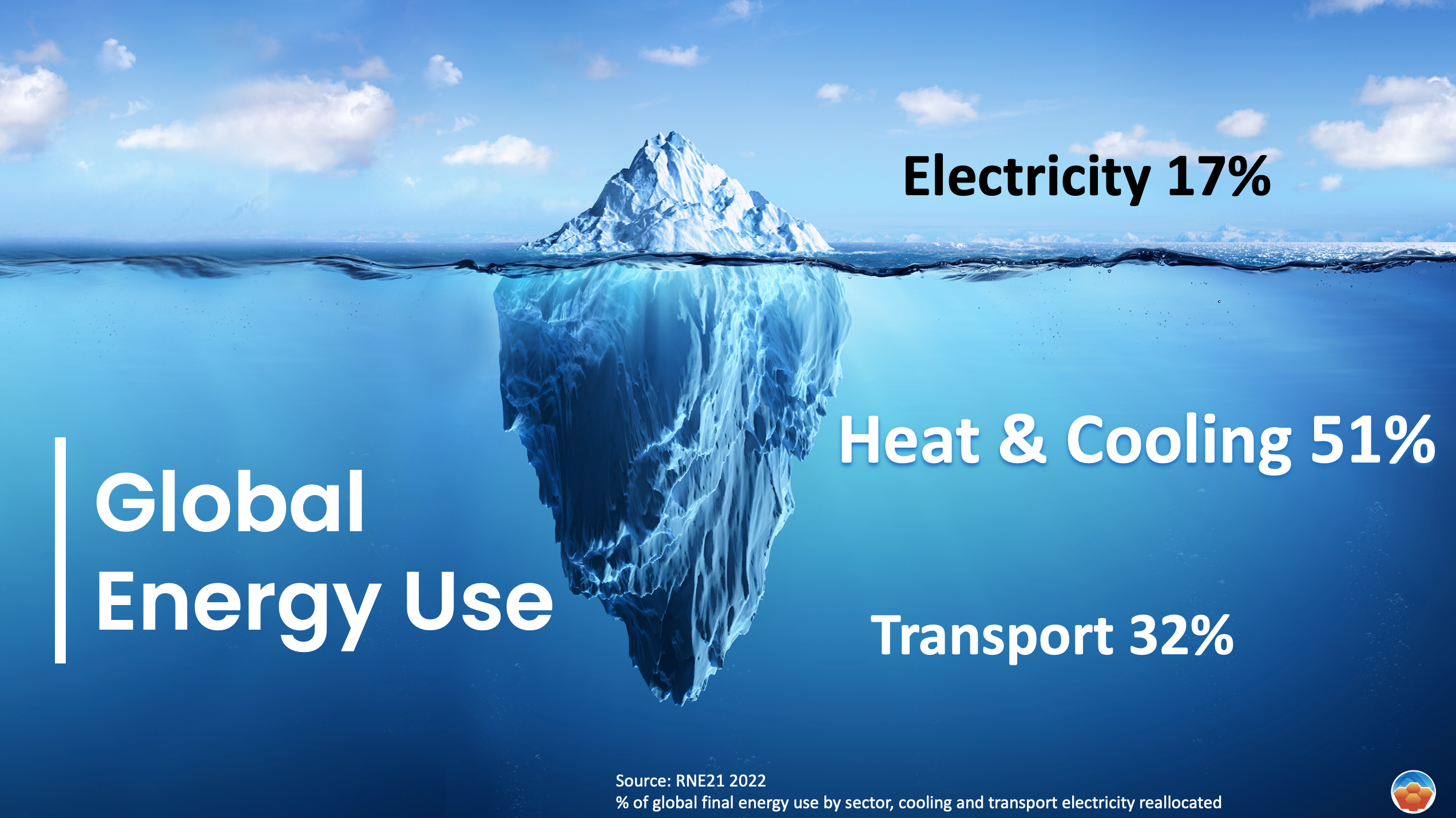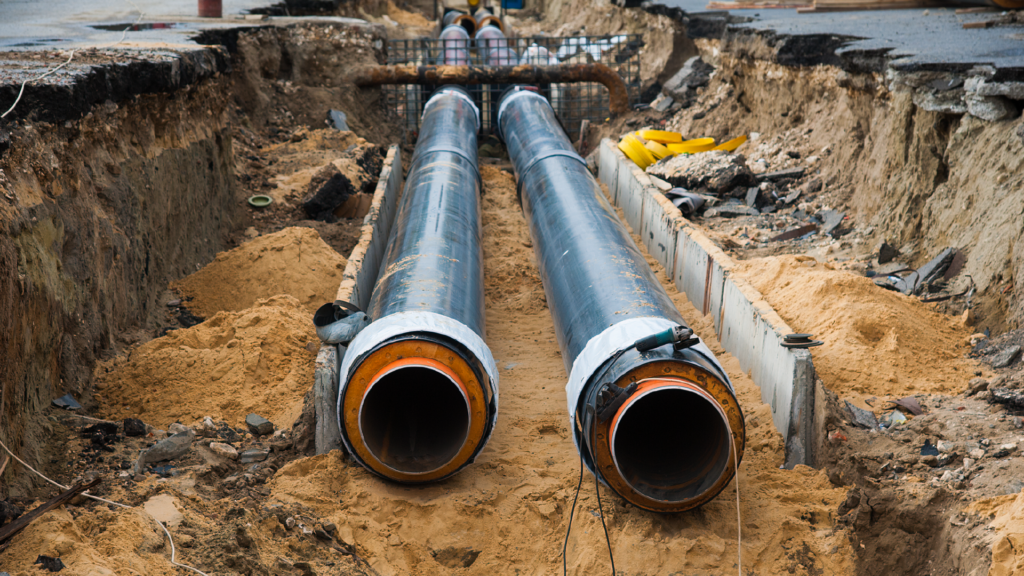Decarbonize Heating Now For A Sustainable Future
Discover the path to a greener tomorrow with our seasonal thermal energy storage solutions. Join us in transforming heating from the largest energy consumer into a model of efficiency and sustainability.
Why Decarbonize Heating?
Europe has made significant progress in decarbonizing its electricity sector, with a strong push towards renewable energy sources like wind and solar, reducing reliance on fossil fuels. This effort attempts to shift the continent’s energy consumption towards cleaner alternatives. Similarly, in the transport sector, initiatives to increase electric vehicle use and improve public transportation networks aim to cut down fossil fuel usage linked to transport, further contributing to Europe’s green transition.
However, the heating and cooling sector, which accounts for over half of Europe’s energy use, remains a critical area needing more focus. Despite advancements in other areas, the sheer volume of energy consumed by heating and cooling highlights the urgency for innovative solutions here and now. As Europe strives to achieve NetZero emissions, enhancing the efficiency and sustainability of heating and cooling systems is essential for meeting these ambitious environmental goals.

Electrification and Its Impact
Electrification through heat pumps is often championed as a primary strategy for decarbonizing heat in efforts to shift away from fossil fuels. Heat pumps, recognized for their energy efficiency, play a pivotal role in this transition by leveraging electricity to provide heating and cooling. However, this shift introduces significant challenges, particularly for the electrical grids tasked with supporting an increased load. The inherent variability of renewable energy sources, such as solar and wind, results in fluctuating power production, creating periods of both surplus and deficit. As these renewables become more integral to our power supply, the grid faces heightened pressure to maintain a delicate balance between supply and demand.
When heat pumps are widely adopted, their substantial electricity requirements—especially during the cold months when heating demand peaks and solar availability is reduced—compound the existing strain on electrical systems. This surge in demand can intensify the grid’s load balancing challenges, risking potential instability and inefficiency within the energy infrastructure. Thus, while electrification via heat pumps stands as a green alternative, it also necessitates robust solutions to mitigate its impact on the already stressed electrical grids.
The Case for Decarbonization with Seasonal Thermal Energy Storage

Our seasonal thermal energy storage can store heat from a wide variety of sources, making it a versatile component in sustainable thermal energy management. We can efficiently store heat captured from solar thermal collectors, regardless of the brand of solar thermal collector used.
Excess heat from district heating networks is another great source of thermal energy as district heating networks tend to have an excess during the summer and a deficit during winter. We can solve this demand-timing issue by saving the summer excess to meet the winter deficit.
Moreover, we can store waste heat from industrial processes and data centers, transforming what is typically an overlooked byproduct into a valuable resource. Additionally, we can harness and store ambient heat within buildings in order to provide cooling, effectively recycling the energy from air conditioning systems for heating purposes. This capability to store diverse types of heat supports a broad spectrum of decarbonization efforts and energy efficiency strategies.
Benefits for Different Customer Segments
Commercial Customers
For commercial customers, including hotels, schools, hospitals, office buildings, shopping centers, cinemas, data centers, and corporate buildings, adopting seasonal thermal energy storage leads to significant cost savings and improved energy efficiency. This shift not only benefits the financial bottom line but also positions these establishments as leaders in corporate sustainability. By optimizing heating and cooling processes, these commercial entities can transform what was once a source of carbon emissions into a valuable asset, showcasing their commitment to environmental stewardship and setting a positive example in their respective industries.


Industrial Customers
Industrial customers are distinct from commercial customers in that they often generate significant waste heat through their processes. This offers a unique advantage when implementing seasonal thermal energy storage (STES). Unlike commercial entities that need to incorporate solar thermal for charging storage, industrial operations such as bottling plants, breweries, textile manufacturers, commercial laundries, and paper mills can leverage their existing waste heat streams. This allows industrial customers to charge the seasonal thermal energy storage solely from waste heat, provided their waste heat is sufficient. The adoption of STES in these settings not only boosts operational efficiency and reduces energy expenditures but also plays a pivotal role in minimizing their environmental impact by lowering their carbon emissions.
District Heating Networks
Implementing seasonal thermal energy storage (STES) into district heating networks directly addresses their demand timing challenge, where a consistent year-round supply contrasts with fluctuating demand—lower in spring and summer, and higher in autumn and winter. Traditionally, this imbalance forces the networks to dissipate excess heat during warmer months and resort to burning fossil fuels to satisfy the surge in demand during colder periods. By integrating STES, district heating systems can efficiently store surplus heat during low-demand months and then release it during peak demand times, effectively eliminating waste and the need for additional fossil fuel consumption. This strategic approach not only optimizes resource use but also significantly enhances the sustainability and efficiency of district heating, aligning with broader environmental goals by reducing carbon emissions and reliance on non-renewable energy sources.

Commercial Customers
For commercial customers, including hotels, schools, hospitals, office buildings, shopping centers, cinemas, data centers, and corporate buildings, adopting seasonal thermal energy storage leads to significant cost savings and improved energy efficiency. This shift not only benefits the financial bottom line but also positions these establishments as leaders in corporate sustainability. By optimizing heating and cooling processes, these commercial entities can transform what was once a source of carbon emissions into a valuable asset, showcasing their commitment to environmental stewardship and setting a positive example in their respective industries.

Industrial Customers
Industrial customers are distinct from commercial customers in that they often generate significant waste heat through their processes. This offers a unique advantage when implementing seasonal thermal energy storage (STES). Unlike commercial entities that need to incorporate solar thermal for charging storage, industrial operations such as bottling plants, breweries, textile manufacturers, commercial laundries, and paper mills can leverage their existing waste heat streams. This allows industrial customers to charge the seasonal thermal energy storage solely from waste heat, provided their waste heat is sufficient. The adoption of STES in these settings not only boosts operational efficiency and reduces energy expenditures but also plays a pivotal role in minimizing their environmental impact by lowering their carbon emissions.

District Heating Networks
Implementing seasonal thermal energy storage (STES) into district heating networks directly addresses their demand timing challenge, where a consistent year-round supply contrasts with fluctuating demand—lower in spring and summer, and higher in autumn and winter. Traditionally, this imbalance forces the networks to dissipate excess heat during warmer months and resort to burning fossil fuels to satisfy the surge in demand during colder periods. By integrating STES, district heating systems can efficiently store surplus heat during low-demand months and then release it during peak demand times, effectively eliminating waste and the need for additional fossil fuel consumption. This strategic approach not only optimizes resource use but also significantly enhances the sustainability and efficiency of district heating, aligning with broader environmental goals by reducing carbon emissions and reliance on non-renewable energy sources.

Moving towards a sustainable future
Tackling the challenge of heating decarbonization is key to Europe’s environmental targets, with seasonal thermal energy storage offering a viable solution to reduce carbon emissions and ease the load on electrical grids. This technology not only addresses the inefficiencies in current heating electrification efforts but also brings substantial benefits across various sectors, from commercial buildings to industrial processes and district heating networks. By optimizing energy use and embracing renewable sources, we can significantly cut energy costs, enhance system reliability, and make substantial strides toward a sustainable, NetZero future. This collective effort in adopting innovative heating solutions marks a critical step forward in our global commitment to combating climate change.
Looking for an Alternative Heating Solution?
If your heating needs surpass 300 MWh and you’re exploring ways to minimize your energy expenses, please a request for quotation. Our team will conduct a comprehensive assessment of your requirements and provide you with a detailed quotation, outlining how Heliostorage can benefit you.


